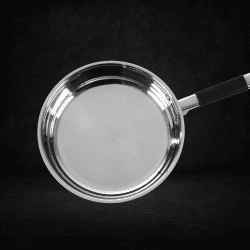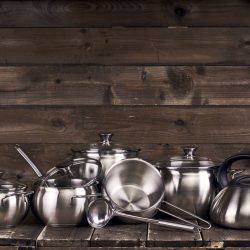Whenever you're cooking on the stovetop, you don’t want to burn your hands in the process. You probably heard about the great performance of All-Clad cookware, but wonder if you should get them because the handles might become hot. We've researched if All-Clad handles can be touched while cooking. Here's what we learned.
Yes, All-Clad handles do get hot. But it really depends on how long you cook and what temperature you use. Touching the handles while cooking should not be a problem if you are cooking at a low to medium heat level and if you do not leave them on the heat source for a very long time.
However, exercise caution by handling All-clad cookware with an oven mitt or potholder.
All-Clad handles are designed to resist heat, so your hands are actually in safe hands. The next section will tell you why.
What are All-Clad handles made of?
All-Clad handles are made of cast stainless steel. Compared to other metals, stainless steel is a poor conductor of heat. In fact, in an experiment done for the California State Science Fair, stainless steel was proven to be the worst heat conductor compared to copper, aluminum, brass, and lead.
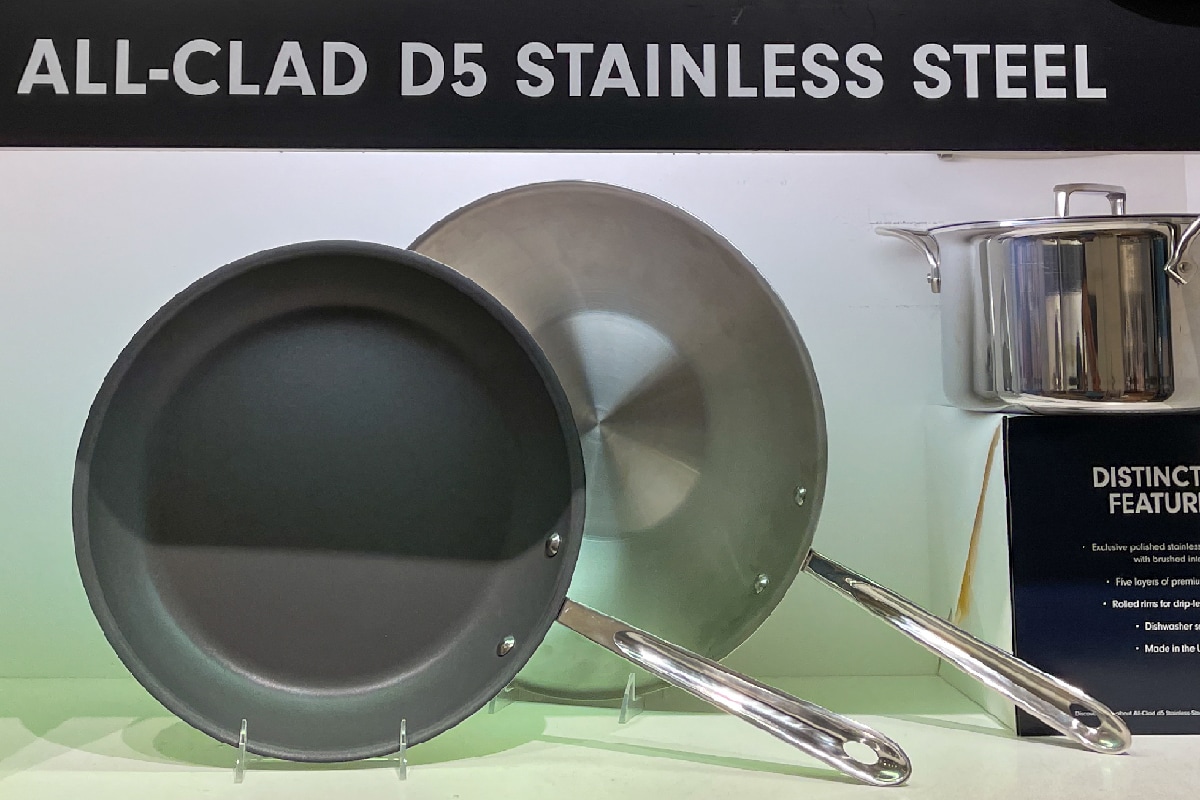
This means that All-Clad handles do not easily or rapidly become hot. However, as mentioned previously, the cooking time and the temperature level could still make them hot eventually. What, then, can you do to avoid getting burned by them?
How do you cook with All-Clad without burning?
We recommend using only low to medium heat when using an All-Clad cookware, unless you need to use it for boiling. When you need to use a higher temperature, or if you are cooking for a long time, it would be best to use oven mitts or pot holders to avoid burning yourself.
The good news is All-Clad actually sells them too. If you are considering buying the cookware, and you want to have matching or coordinated kitchen tools and supplies, you might as well grab them.
In case you don’t like wearing oven mitts, you might also want to check out All-Clad’s silicone grips. They are designed to cover the handles to provide extra protection from heat. These silicone grips provide heat protection up to 500 degrees Fahrenheit.
Get this All-Clad potholder and trivet set on Amazon.
You might be wondering why we recommend using low to medium heat only. This is because that is actually all you need. All-Clad cookware is designed to distribute heat evenly and therefore to cook the food fast. Unlike their handles, the bottom and sides of the All-Clad pots and pans are not made of purely stainless steel.
In the next section, we will discuss what All-Clad cookware is made of and the significant difference it makes from purely stainless steel cookware.
What is better All-Clad or stainless steel?
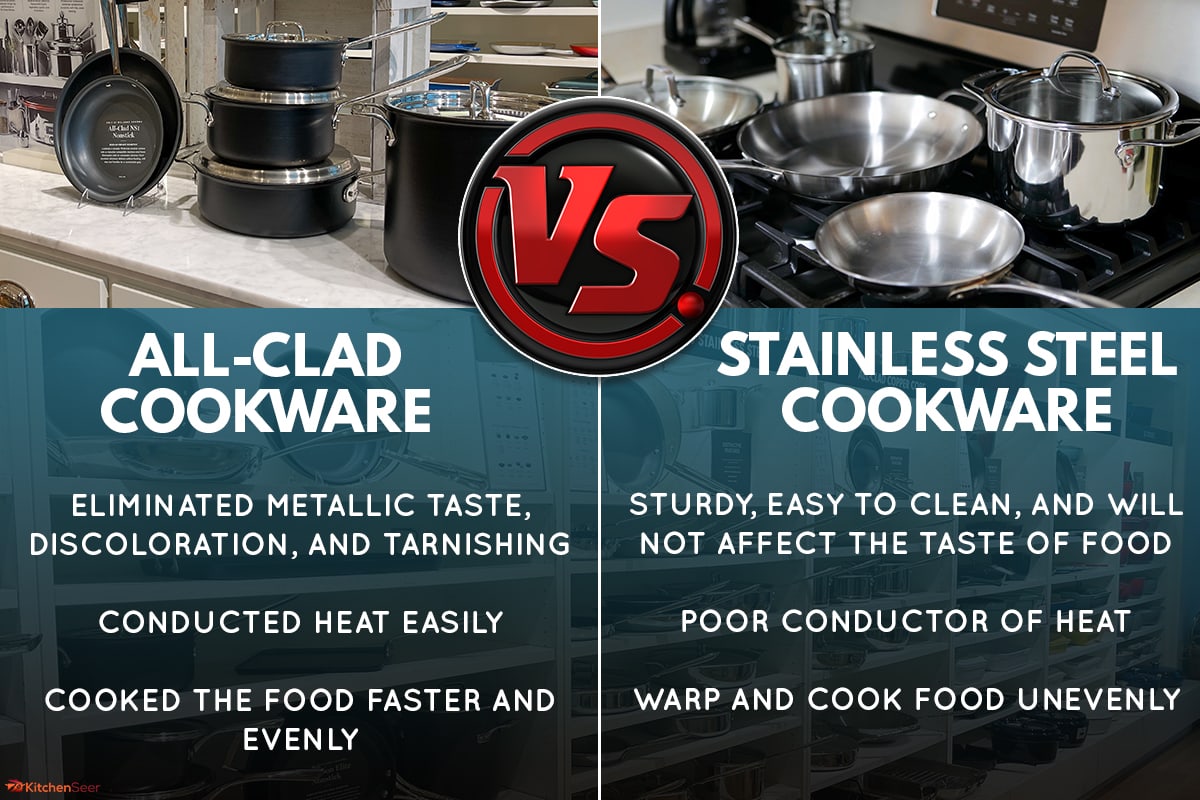
Before comparing All-Clad with stainless steel, we’ll tell you first about what it was like before All-Clad was discovered.
Aluminum cookware was primarily used because they were a good conductor of heat. Food cooked on aluminum was heated quickly and evenly. However, people complained about them because they discolored the food and made them taste metallic. Aluminum cookware also tarnished easily and was not easy to clean.
On the other hand, stainless steel cookware was found to be sturdy, easy to clean, and did not affect the taste of the food. You would think that’s good enough. However, as discussed earlier, stainless steel is a poor conductor of heat.
Cooking on a pot or a pan made of stainless steel takes much more time than cooking on aluminum cookware. Stainless steel also has the tendency to warp and cook food unevenly.
One day, the founder of All-Clad, John Ulam, a metallurgist, had the brilliant idea to combine the two materials together to create a perfect pan for himself. According to the company’s website, “Being an avid home cook, John wondered what would happen if he applied his patented metal crafting methods to cookware.”
He designed the very first All-Clad pan with sheets of stainless steel bonded with sheets of aluminum core. The outer layer, stainless steel, eliminated the metallic taste, discoloration, and tarnishing. On the other hand, the core, made of aluminum, conducted heat easily and cooked the food faster and evenly.
Having both materials in one pan optimized the benefits. We can therefore say that All-Clad is much better than stainless steel cookware.
What should you not do with All-Clad?
Given that All-Clad seems to be the perfect cookware, is there anything that you should not do?
All-Clad has a lifetime warranty, but of course, like any other product, it has limitations. It guarantees to repair or replace defective parts as long as proper use and care instructions are followed.
We compiled the best way for you to take care of your All-Clad cookware so that you won’t even need to claim the guarantee.
Cook Using Low To Medium Heat
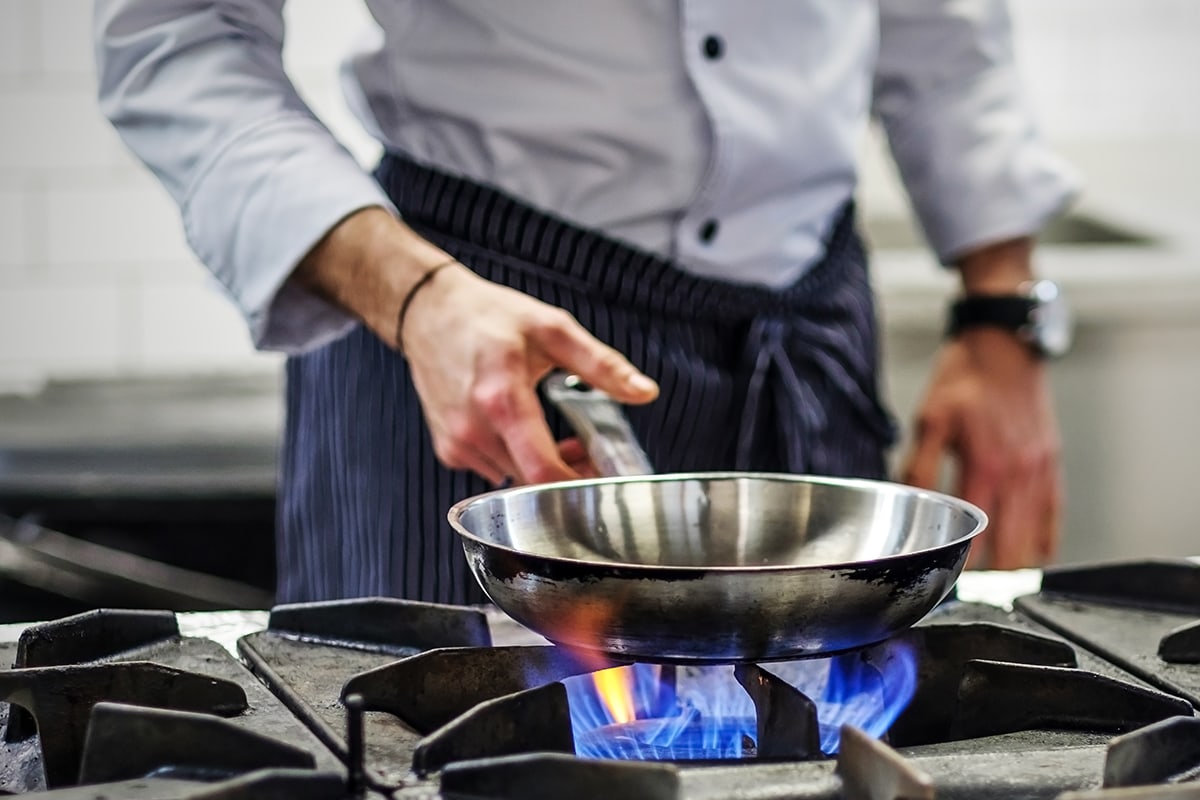
First, we mentioned earlier that we recommend using low to medium heat only when using All-Clad. This cookware is designed to hold heat, and exposing them to high temperatures, especially when empty for an extended period of time, could severely damage it. With extremely high heat, the materials could separate and deteriorate.
Hand Wash
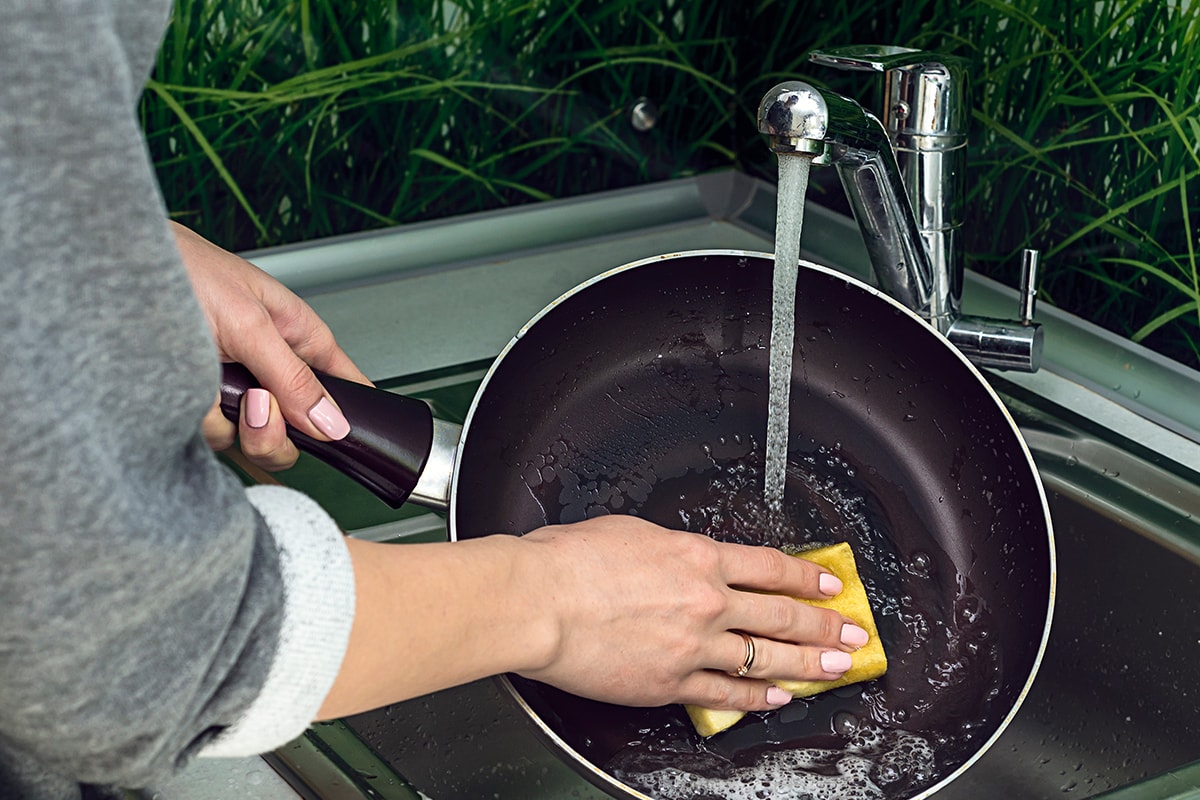
For non-stick pans, the non-stick coating is guaranteed for only 12 months. We recommend washing these types of cookware by hand only. In fact, washing them in the dishwasher voids their warranty. You should avoid metal utensils, steel wool, bleach and abrasive cleaners because the non-stick coating could come off.
Don't Salt Pans On Dry Heat
Third, take note that using salt may damage the stainless steel interior of your cookware. It could cause pitting corrosion. Although it only affects the appearance of your cookware and not its performance, it is still best to avoid this. You can prevent it by putting salt only when the liquid is already boiling.
Read: "Do I Need To Season All Clad Pans?"
Handle With Care
Lastly, please do not drop, bang or throw your pots and pans for any reason. This might cause damage to the All-Clad, but also to your entire kitchen as well.
Read: "How Long Do All Clad Pans Last?"
Conclusion
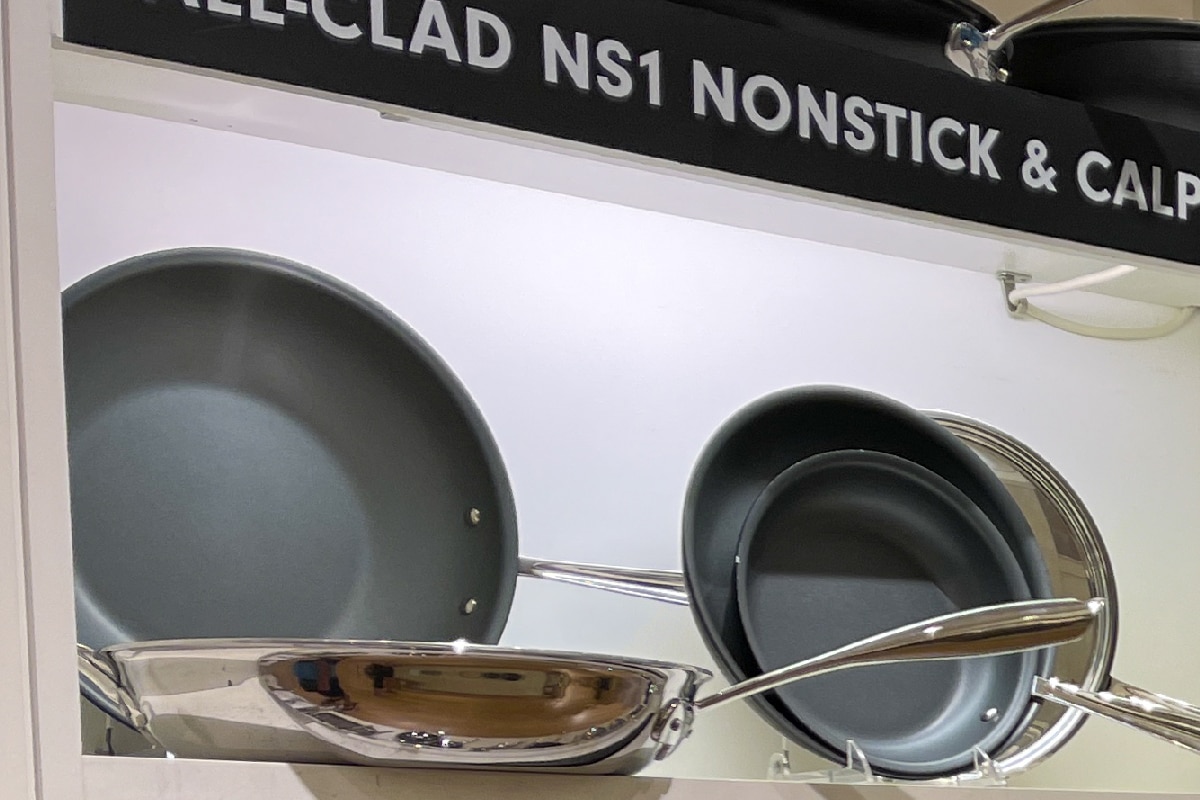
All-Clad handles do get hot; however, they heat up slowly. So if you're cooking over low or medium temperatures the handles should not be too hot to touch. Do use caution, espeically if cooking for a very long duration. Protect yourself by wearing oven mitts or using potholders to handle All-Clad cookware.
Happy cooking!


![A Nonstick All Clad pot and pan aisle at a Williams Sonoma store, Are All-Clad Pans Teflon Free? [A Complete Guide]](https://kitchenseer.com/wp-content/uploads/2022/10/Nonstick-All-Clad-pot-and-pan-aisle-at-a-Williams-Sonoma-store-250x250.jpg)
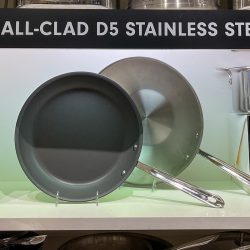
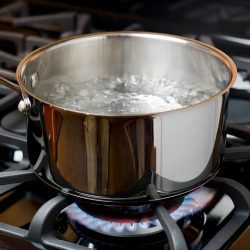
![Cooking frittata with a green asparagus and parmesan on the oven, Are Pans Oven-Safe? [Even With Silicone Handles]](https://kitchenseer.com/wp-content/uploads/2022/07/Cooking-frittata-with-green-asparagus-and-parmesan-on-the-oven-250x250.jpg)
